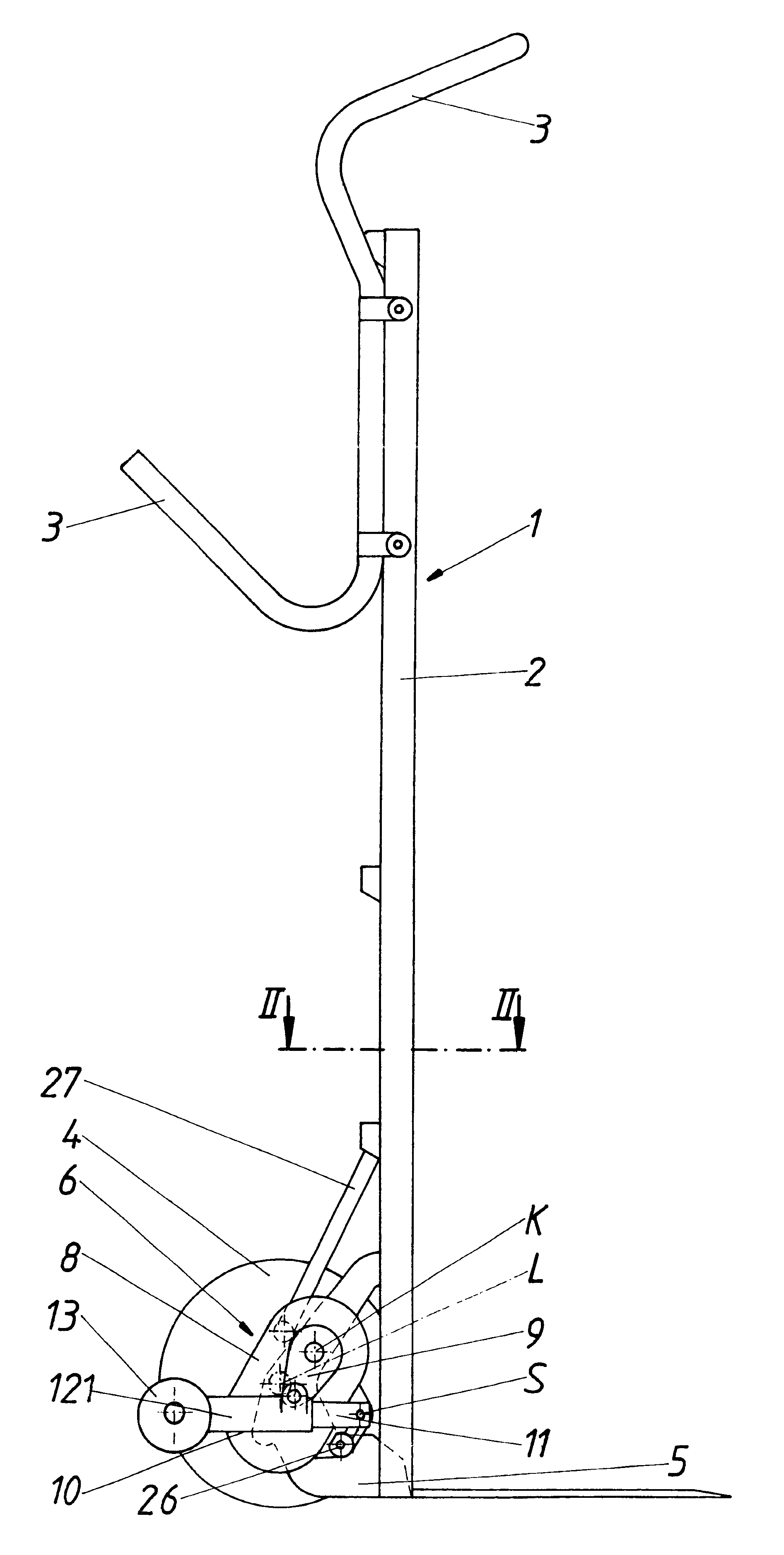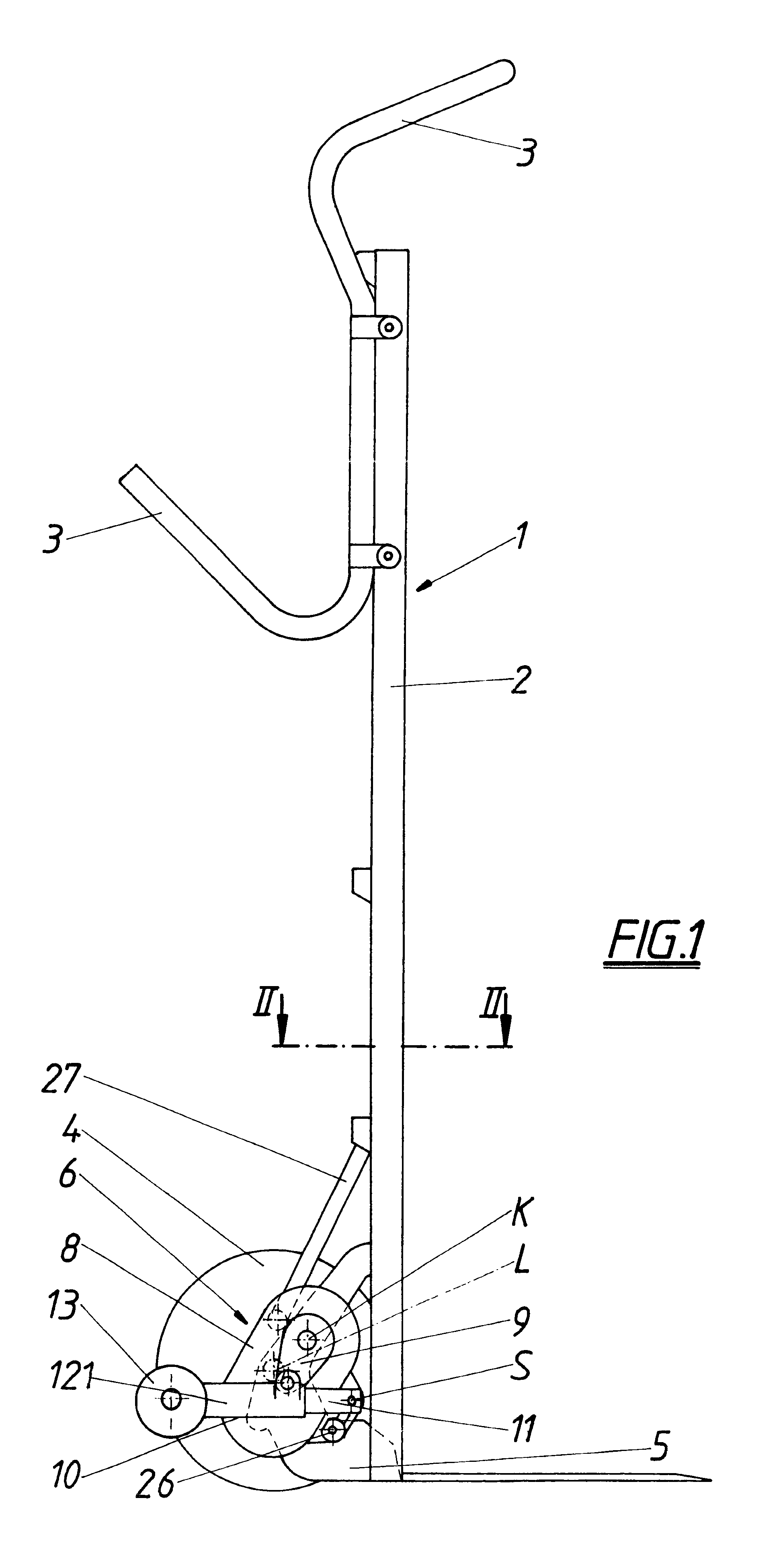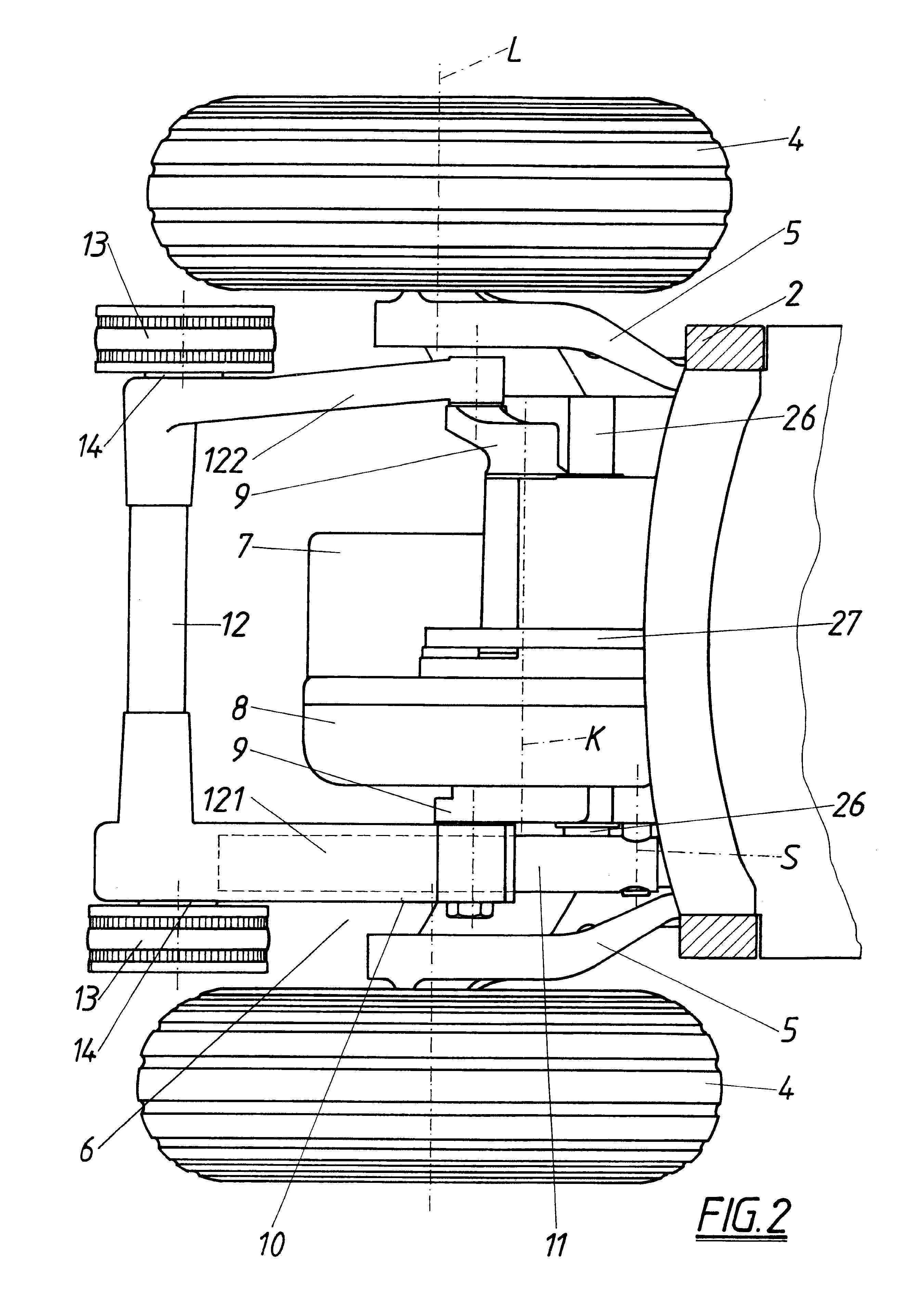Two-wheel hand truck
a two-wheeled, hand-held technology, applied in the direction of hand-held cart accessories, hand-held cart accessories, carriage/perambulator accessories, etc., can solve the problems of increasing the weight of the tare, requiring considerable structural expense, and affecting the handiness of the sack trolley
- Summary
- Abstract
- Description
- Claims
- Application Information
AI Technical Summary
Benefits of technology
Problems solved by technology
Method used
Image
Examples
Embodiment Construction
The object of the invention is therefore to create a sack trolley of the type mentioned at the outset, which is distinguished by its easily handled and functional hoist mechanism with a simple and compact structure.
The invention solves this task in that the lifting arm is comprised of a swing guide component swivel-mounted about the swivel axis and a support component taking up the support rollers and longitudinally displaceable compared to the swivel guide component, whereby the crank drive is articulated on the support component with its crank arm. The free end of the support component is moved on the one hand by the superposition of the swivel movement of the swivel guide component effective thereon and the rotary movement of the crank arm on the other hand along an approximately reinform curved path, resulting in trouble-free climbing assistance according to the direction of movement with the support component and its support rollers. When the sack trolley is in a position corre...
PUM
 Login to View More
Login to View More Abstract
Description
Claims
Application Information
 Login to View More
Login to View More - R&D
- Intellectual Property
- Life Sciences
- Materials
- Tech Scout
- Unparalleled Data Quality
- Higher Quality Content
- 60% Fewer Hallucinations
Browse by: Latest US Patents, China's latest patents, Technical Efficacy Thesaurus, Application Domain, Technology Topic, Popular Technical Reports.
© 2025 PatSnap. All rights reserved.Legal|Privacy policy|Modern Slavery Act Transparency Statement|Sitemap|About US| Contact US: help@patsnap.com



